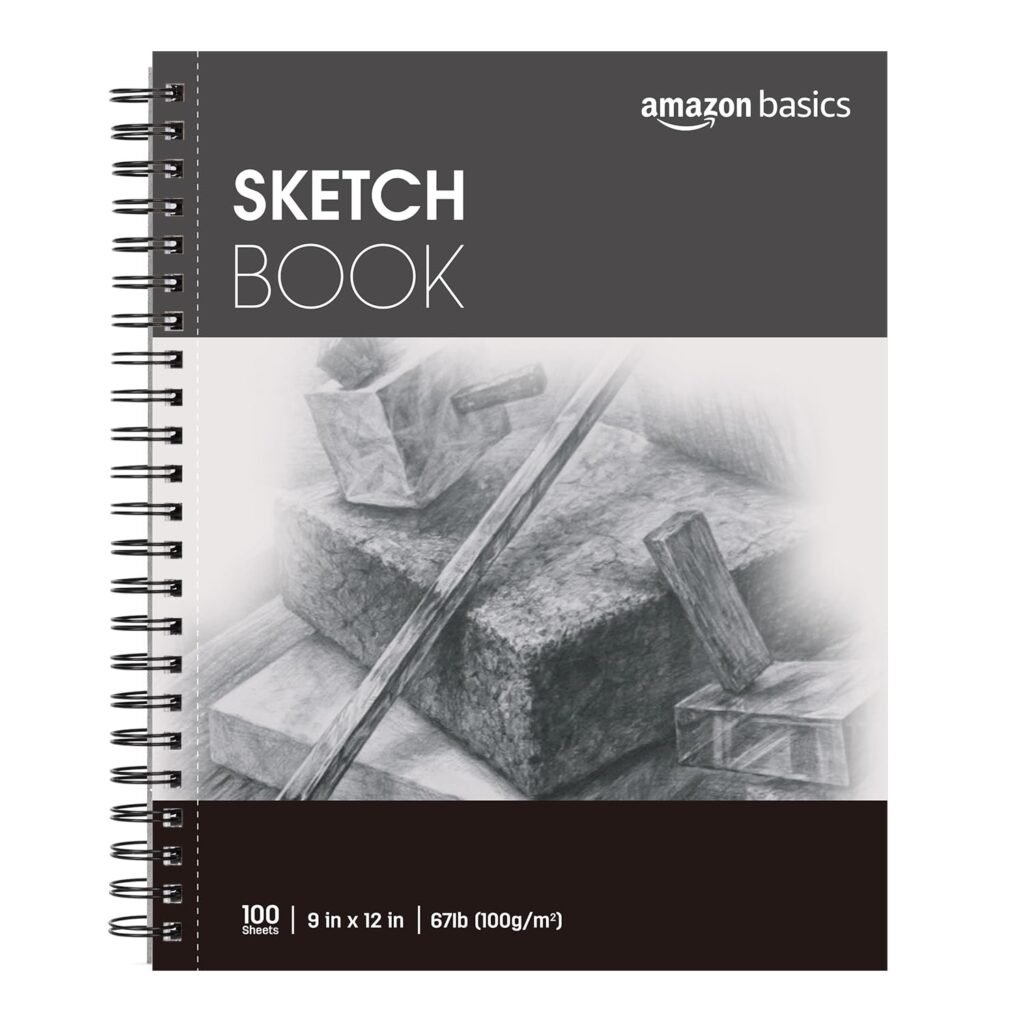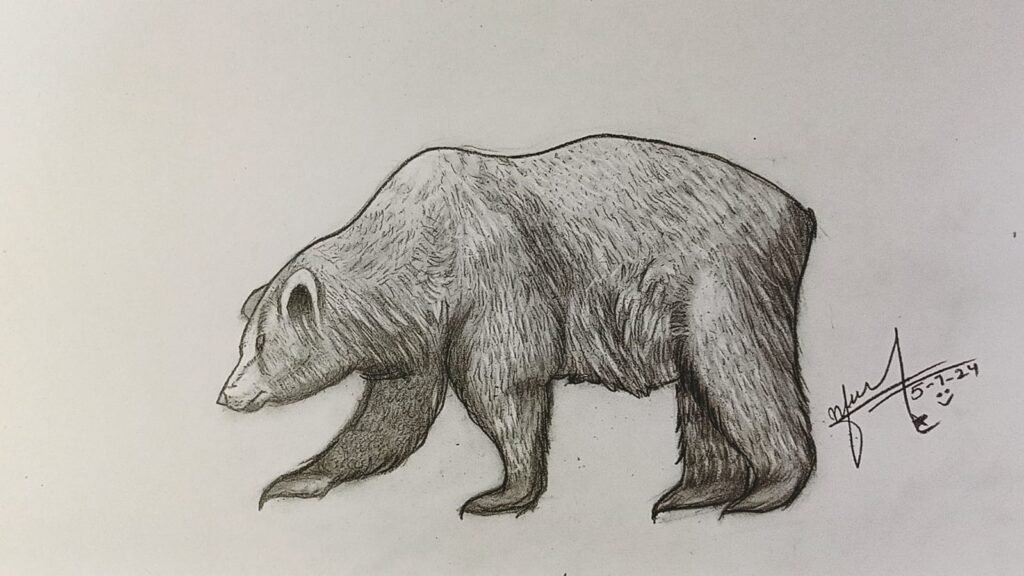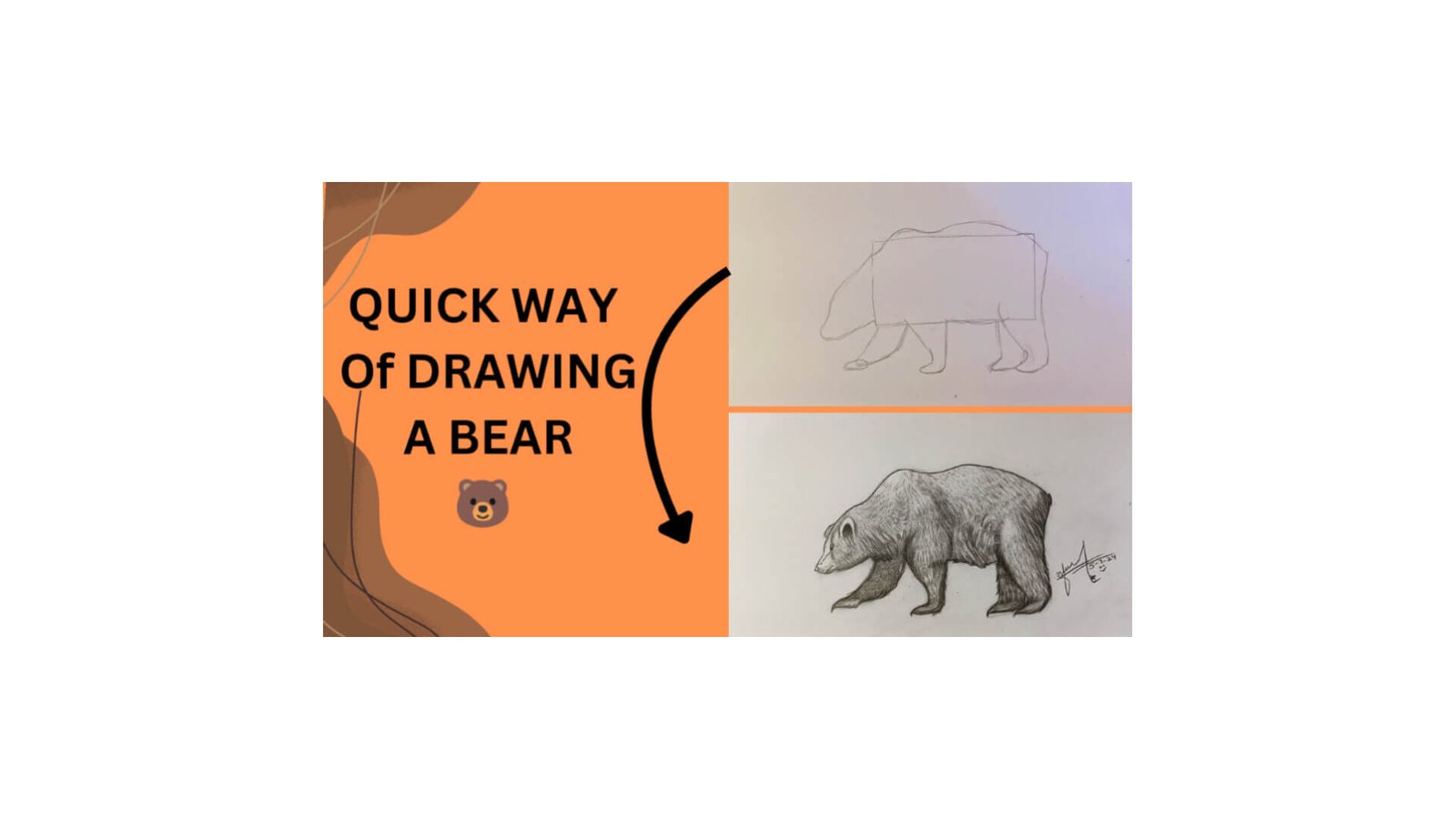Introduction
Welcome to our imaginative corner, where we’ll direct you through the intriguing system of drawing a beer sketch. Whether you’re a carefully prepared craftsman or a growing lover, this bit-by-bit instructional exercise will assist you with catching the reviving substance of a beer glass on paper. In this guide, we’ll cover all that you really want to be aware of, from social events and the right materials to idealizing the last subtleties of your sketch. With persistence and practice, you’ll figure out how to portray the unpredictable play of light and shadow, the rich surfaces, and the enticing foam of a very well-poured beer. Toward the end of this aide, you’ll have a wonderful beer sketch to gladly show and the ability to make more magnum opuses later on. Cheers to imagination and the delight of drawing. Also visit Easy Eyes Sketch for Beginners.
Materials Required for Drawing a Beer Sketch
Making a point-by-point and sensible beer sketch requires the right devices and materials. Here is an extensive rundown of all that you’ll require, along with clarifications for why everything is fundamental:
1. Sketchbook or Drawing Paper
Picking the right surface to draw on is pivotal for achieving the ideal outcomes. An excellent sketchbook or drawing paper gives a smooth surface that takes into consideration simple pencil strokes and concealment.

- Suggestion: Utilize corrosive-free, heavyweight paper (something like 70 lb. or 110 gsm.) to forestall smirching and guarantee sturdiness.
- Why: The nature of the paper influences the capacity to mix and delete, which is significant for accomplishing practical surfaces and subtleties.
2. Pencils
A range of pencils with shifting hardness levels will give you the adaptability to make various shades and surfaces.
- Range: HB, 2B, 4B, and 6B pencils.
- Why: HB pencils are perfect for light outlines and fine subtleties, while milder pencils (2B, 4B, and 6B) are great for more obscure lines and concealing. The assortment permits you to assemble profundity and difference in your sketch.
3. Erasers
Two sorts of erasers are suggested: a plied eraser and a vinyl eraser.
- Worked Eraser: Ideal for lifting graphite without harming the paper. It’s adaptable and can be used to delete little regions or make features.
- Vinyl Eraser: Great for tidying up bigger regions and guaranteeing fresh, clean edges.
- Why: Various erasers offer different degrees of accuracy and can assist with refining your drawing by adjusting buttons and adding features.
4. Sharpener
A decent-quality sharpener is vital for keeping your pencils sharp and prepared for definite work.
- Proposal: A manual or electric sharpener that can deal with various pencil thicknesses.
- Why: A sharp point considers more exact lines and better subtleties in your sketch.
5. Ruler
A ruler is helpful for keeping up with extents and defining straight boundaries, particularly in the underlying phases of your sketch.
- Why: Exact extents and straight lines are significant for a reasonable portrayal of the beer glass.
6. Mixing Instruments
Mixing stumps or tortillons assists with streamlining pencil strokes and makes for consistent overshadowing.
- Why: Mixing devices are fundamental for accomplishing smooth changes among light and dim regions, giving your sketch a more clean and reasonable look.
7. Reference picture
A reasonable, top-notch reference picture of a beer glass is imperative.
- Why: A reference picture gives a visual manual for extents, subtleties, and the interchange of light and shadows. Whether you go through a photo or set a genuine beer glass, having a reference guarantees precision in your drawing.
8. Lighting
Great lighting is fundamental for seeing fine subtleties and keeping up with predictable overshadowing
- Proposal: Utilize a sunny light or position your work area close to a characteristic light source.
- Why: Appropriate lighting diminishes eye strain and assists you with precisely seeing and recreating the light and shadows in your sketch.
Having the right materials is the most important step toward making an effective beer sketch. Each device has a particular reason and adds to the general quality and authenticity of your drawing. Assemble these materials, set up your work area, and you’ll be completely ready to begin your imaginative excursion. Cheerful portraying!
Step-by-Step Guide to Drawing a Beer Sketch
Stage 1:
Drawing a beer sketch can be a tomfoolery and compensating experience, whether you’re an accomplished craftsman or simply getting everything rolling. This guide will take you through the step-by-step process, from social occasion materials to finishing your sketch.
Stage 2: Set Up Your Work Area
Track down an agreeable and sufficiently bright work area. Guarantee that your reference picture is plainly apparent and at a proper point. On the off chance that you’re utilizing a genuine beer glass, place it in a position where you can see the subtleties clearly.
Stage 3: Fundamental Layout
- Begin with Fundamental Shapes: Start by softly outlining the essential states of the beer glass. Most beer glasses can be separated into basic mathematical shapes like squares, ovals, and chambers. For instance, draw a chamber for the body of the glass and an oval for the top.
- Lay out Extents: Utilize your ruler to guarantee the extents are right. The level and width of the glass ought to be exactly comparable to one another.
- Light Lines: Keep your lines light so they can be effectively changed. These underlying lines are simply directions for your last drawing.

Stage 4: Add Subtleties
- Refine the Framework: When you’re content with the fundamental shape and extents, begin refining the layout. Focus on the bends and special elements of the glass.
- Draw the beer: Inside the glass, draw the fluid level of the beer. This will ordinarily be an oval shape that follows the form of the glass.
- Froth Head: Sketch the froth on top of the beer. Froth can have a sporadic shape, so utilize a progression of bended lines to address it.

Stage 5: Concealing and Surface
- Distinguish Light Source: Figure out where the light source is coming from in your reference picture. This will assist you with understanding where to add shadows and features.
- Concealing the Glass: Utilize a milder pencil (2B or 4B) to begin concealing the glass. Beer glasses are frequently intelligent, so focus on the features and shadows. Utilize light, smooth strokes to step by step develop the overshadowing.
- Froth Surface: Add surface to the froth by utilizing a plied eraser to lift some graphite and make lighter regions. This will give the froth a sensible, effervescent appearance.

Stage 6: Adding Last Contacts
- Refine Subtleties: Go over your sketch and refine any subtleties that need more definition. This could incorporate the edge of the glass, reflections, or the surface of the froth.
- Tidy Up: Utilize your eraser to tidy up any wanderer stamps or smircesh. This will help your sketch look clean and proficient.
- Difference and Features: Upgrade the differentiation by obscuring the haziest regions and adding features with your eraser. This will make your sketch pop and look more three-layered.

Stage 7: Audit and Finish
- Make a stride back and survey your sketch. Contrast it with your reference picture to guarantee exactness. Make any last changes expected to work on the general look and feel of your drawing.

Stage 8: Sign and Date
Whenever you’re happy with your beer sketch, remember to sign and date your work. This is a significant stage for any craftsman to check their creation.

Drawing a beer sketch includes cautious perception, persistence, and practice. By following these means, you’ll have the option to make a reasonable and itemized sketch that captures the substance of an invigorating glass of beer. Keep in mind that the way to progress is through practice, so continue outlining and refining your abilities. Partake all the while and play around with your imaginative excursion!
Tips for Creating the Perfect Beer Sketch
Drawing an ideal beer sketch requires something other than the right materials; it likewise includes strategy, perception, and practice. Here are a few hints to assist you with accomplishing a practical and noteworthy beer sketch:
1. Concentrate on Your Reference
Before you begin portraying, set aside some margin to concentrate on your reference picture or genuine beer glass. Notice the shapes, extents, and how the light collaborates with the glass and the beer. Notice the reflections, refractions, and the manner in which the froth sits on top of the beer.
2. Begin with light frameworks.
Start your sketch with light, straightforward frameworks to outline the essential state of the beer glass. Utilize a HB pencil to draw the fundamental design: a chamber for the glass and an oval for the top. Light layouts permit you to make changes effectively without leaving weighty imprints.
3. Keep up with legitimate extents
Utilizing a ruler can assist with keeping your measurements precise. Focus on the level and width of the glass, the thickness of the glass walls, and the level of the beer inside. The right extent is vital for a sensible look.
4. Utilize light and shadow really
Understanding the light source is vital to adding profundity to your sketch. Figure out where the light is coming from and utilize this data to suitably conceal it. Utilize a range of pencil grades to make various tones:
- HB for light overshadowing and beginning blueprints.
- 2B and 4B for mid-tones.
- 6B for the most obscure shadows.
- Smooth changes among light and dull regions will give your sketch a three-layered appearance.
5. Surfaces and Subtleties
Adding surface is fundamental for authenticity. Focus on the various surfaces in your sketch.
- Glass: smooth with unpretentious reflections. Utilize light strokes and mix well to make a polished impact.
- Lager: Can have slight variations in tone, particularly in the event that it’s a more obscure beer. Utilize cross-incubating and mixing methods to achieve the right surface.
- Froth: Sporadic and effervescent. Gently sketch the froth with little, roundabout movements and utilize a worked eraser to lift graphite, creating features and a foamy appearance.
6. Reflections and Features
Glass has intelligent properties, so remember reflections and features for your sketch. Utilize an eraser to lift graphite and make brilliant places where the light raises a ruckus around town. This adds to the authenticity and gives your sketch a cleaned look.
7. Practice persistence.
Drawing an itemized and sensible beer sketch takes time. Try not to rush the interaction. Enjoy reprieves if necessary, and return with a new perspective. Once in a while, a little can assist you with seeing regions that need improvement.
8. Audit and Change
Whenever you’ve finished your sketch, step back and audit your work. Contrast it with your reference picture and make any important changes. Search for regions where you can add more detail or work on the overshadowing.
Making an ideal beer sketch is a compensating cycle that joins perception, procedure, and persistence. By following these tips and rehearsing consistently, you’ll work on your abilities and produce great, sensible portrayals. Blissful drawing!
What to Avoid During a Beer Sketch
1. Exhausting the paper
Try not to press excessively hard with your pencils, particularly in the beginning phases of outlining. Weighty strain can indent the paper and make it hard to delete errors or change subtleties later on. Begin with light, delicate strokes and develop your concealment step by step.
2. Disregarding Extents
Legitimate extents are fundamental for making a practical beer sketch. Try not to race through the underlying blueprint and find an opportunity to guarantee the level, width, and state of the beer glass are precise. Utilize a ruler if necessary to keep up with straight lines and the right aspects.
3. Dismissing Light and Shadow
Light and shadow play an urgent part in giving your beer sketch profundity and authenticity. Try not to conceal consistently or dismiss the impact of light on the glass and beer. Observe where the light source is coming from in your reference picture and utilize this data to direct your overshadowing.
4. Becoming irritated
Drawing itemized outlines, particularly ones including complicated surfaces like froth and glass reflections, requires tolerance. Abstain from hurrying through the interaction or becoming baffled on the off chance that your sketch doesn’t look amazing right away. Enjoy reprieves if necessary to keep up with the center and try not to commit imprudent errors.
5. Overcomplicating Subtleties
While adding subtleties is significant for authenticity, try not to stuff your sketch with pointless subtleties. Center around catching the fundamental components that characterize a beer glass: the shape, the degree of beer inside, and the surface of the froth. Streamline where conceivable to keep up with lucidity and equilibrium in your piece.
6. Skipping reference checks
Referring to your subject consistently is vital for precision. Abstain from depending entirely on memory or presumptions while drawing complex shapes and surfaces like those found in a beer glass. Get some margin to contrast your sketch and your reference picture to guarantee you’re catching every one of the fundamental subtleties.
7. Not exploring different avenues regarding procedures
Make it a point to explore different avenues regarding different concealing strategies and instruments. Try not to adhere to one methodology all through your sketch. Attempt cross-incubating, texturing, or mixing with a tissue or mixing stump to accomplish various surfaces and impacts.
8. Hating the Cycle
Finally, drawing ought to be agreeable! Abstain from getting too up to speed in accomplishing flawlessness or contrasting your work with others. Embrace the growing experience and commend your advancement with each sketch you complete.
By staying away from these normal entanglements, you can improve your drawing abilities and become more sensible and connected with fine art. Keep in mind that practice and persistence are critical to further developing your drawing skills. Partake in the imaginative excursion and have a good time exploring different avenues regarding various strategies!
FAQs
What materials do I have to begin beer drawing?
You’ll require a sketchbook or drawing paper, pencils (HB to 6B), erasers (plied and vinyl), a sharpener, a ruler, mixing devices, and a reference picture of a beer glass.
How would I pick a decent reference picture for my beer sketch?
Select an unmistakable, high-goal picture that shows the beer glass from various points, with noticeable subtleties like froth, reflections, and the fluid level.
What are a few ways to capture the intelligent properties of glass in my sketch?
Focus on where the light source is coming from. Utilize a delicate pencil for concealing and mix cautiously to make smooth changes among light and dim regions.
How might I portray the froth on top of the beer, everything being equal?
Sketch the froth daintily with roundabout movements. Utilize a plied eraser to lift graphite and make features, copying the effervescent surface of genuine froth.
Would it be a good idea for me to involve a particular concealing strategy for drawing beer portrayals?
Explore different avenues regarding strategies like cross-incubating, texturing, and mixing to accomplish various surfaces. Pick a procedure that best addresses the glass and beer in your reference picture.
What would it be a good idea for me to stay away from while drawing beer?
Abstain from workaholic behavior on paper, dismissing light and shadow, and racing through extents. Take as much time as is needed to notice and precisely portray the subtleties of the beer glass.
How might I further develop my beer portraying abilities over the long haul?
Practice routinely, concentrate on various kinds of beer glasses, explore different avenues regarding concealing procedures, and look for input from different craftsmen or friends.
Might I at any point involve hued pencils or different mechanisms for beer outlines?
Indeed, hued pencils, markers, or even watercolors can be utilized to add tone and profundity to your beer draws. Explore different avenues regarding various mediums to upgrade your craftsmanship.
Conclusion
All things considered, mix framing is an innovative and wonderful activity that anyone can learn with preparation and constancy. By starting with the right materials and using methodologies like eclipsing and surface, you can capture the substance of an ale glass in your craftsmanship. Make a point to shine on nuances like light, shadow, and the keen properties of glass to make your portrayals more useful. Go ahead and investigate various roads in regards to different techniques, and participate in the time spent gaining and chipping away at your capacities. With time and commitment, you’ll have the choice to make astounding and comparative beers that display your creative capacity. Consequently, get your pencils and sketchbook and leave on this creative outing with energy. Cheers to creativity and merry depicting!

